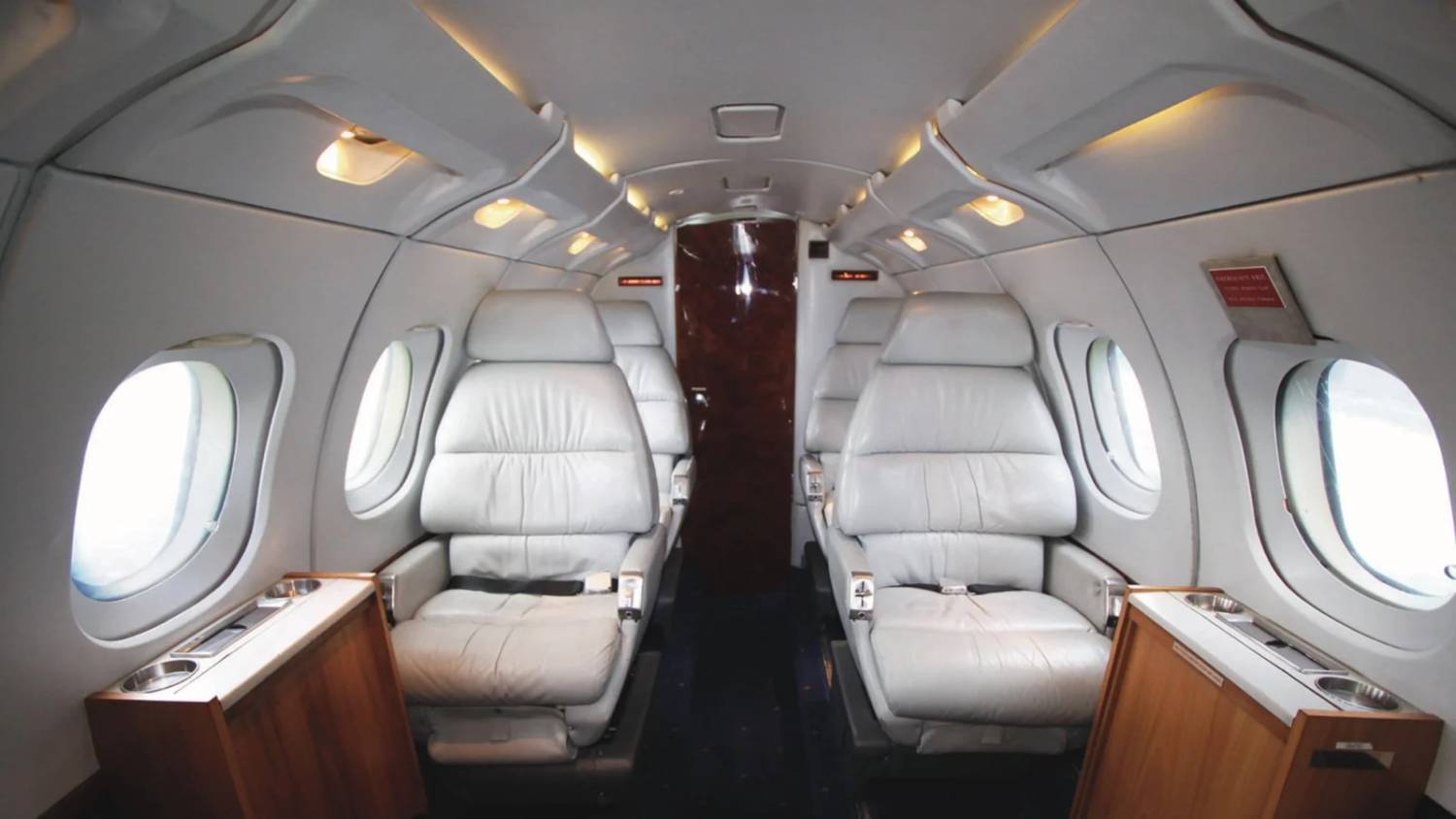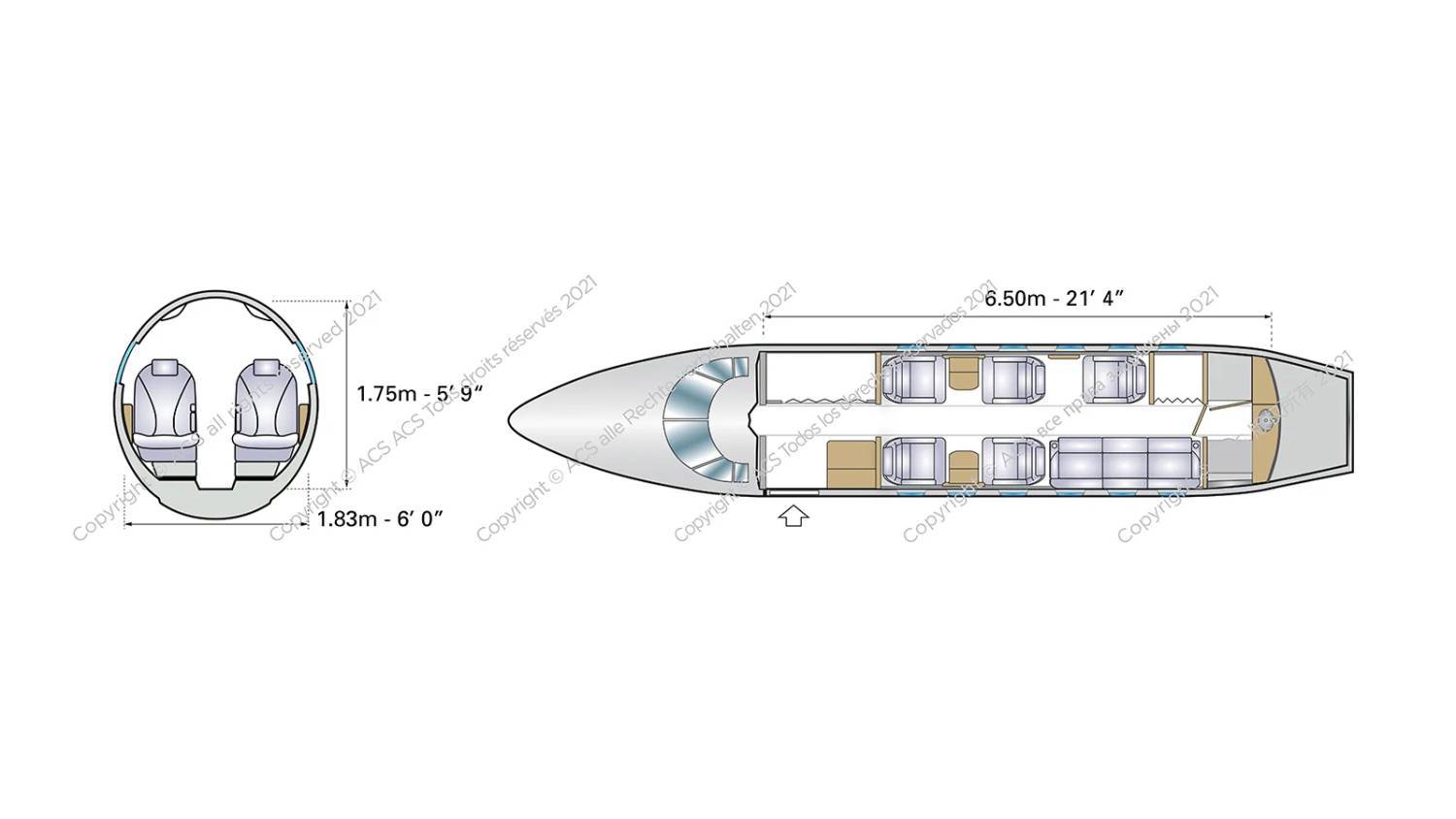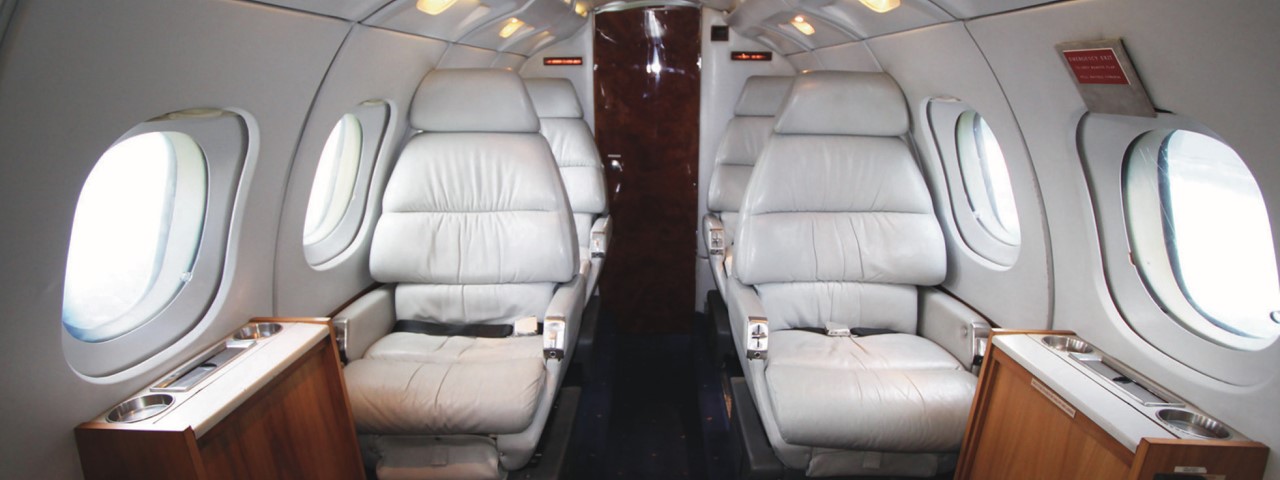


untitled
Description
- Passengers 8
The Hawker 700 was Hawker’s first midsize private jet. Ideal for flights of up to four hours, it boasts a stand-up cabin, comfortable seats and a small galley.
About this aircraft
- Initially designated the HS.125-700, the Hawker 700 took its first flight in 1976 and was introduced to the public in 1977.
- The cabin of a Hawker 700 is typically laid out to accommodate eight passengers, with a ninth seated in the enclosed lavatory if required.
- The aircraft can fly non-stop from New York to Miami and London to Milan.
- The baggage compartment is large enough for around four suitcases.
- The 700 family also includes the 700B, which can fly 2,000 feet higher than the original 700A (43,000 ft), giving the aircraft slightly more range.
- Production of the 700 series ceased in 1983, after over 200 aircraft had been built.
The Hawker 700 has stood the test of time thanks to its durability, spacious stand-up cabin and relatively low operational and acquisition costs. It spearheaded a long line of successful variants, including the Hawker 750, Hawker 800/800XP, Hawker 800XPI, Hawker 850XP and Hawker 900XP.
Interior design

The Hawker 700’s cabin is around 21 feet long, six feet wide and almost six feet tall. Its standard layout features five single slide-swivel-reclining executive seats and a three-place side-facing divan. There’s a minimalist forward galley and an aft lavatory with baggage hold access, which can be used as an extra passenger seat if needed.
Below is an example of a Hawker 700 configuration:

Interesting facts to learn before you fly
- The Hawker 700 has a larger cabin than the Learjet 55 and Citation III.
- Despite its age, its cabin meets Stage III anti-noise standards and is relatively quiet.
Technological features
The Hawker 700 is powered by two Honeywell TFE731-3RH turbofan engines, each producing 3,720 pounds of thrust.
It was originally fitted with comm/nav/ident radios that were typical of the period, along with analogue electromechanical instrument displays. Many aircrafts’ panels have since been updated with more modern equipment.
History
The Hawker 700 evolved from de Havilland’s DH.125 Jet Dragon, a medium-sized corporate jet that first flew in 1962. After de Havilland became part of the Hawker Siddeley group, the aircraft’s design was refined to produce the Series 400 and Series 600 variants, featuring stretched fuselages for increased passenger capacity.
The 400 and 600 led to the development of the HS.125-700. Powered by Garrett TFE731-3R-1H engines, the upgraded model boasted improved cruise speed, range and fuel consumption. The Hawker 700 made its first flight in 1976 and received US and UK certification in mid-1977, with initial deliveries that same year.
Further upgrades included the 700A and 700B, before production of the series ceased in 1984 to make way for the 800. Over 200 units of the 700 series were built in total.
Manufacturer
British aircraft manufacturer Hawker was co-founded by aviation pioneer Harry Hawker in 1920, later merging with engineering group Armstrong Siddeley to form Hawker Siddeley. The company’s famous Hawker Hurricane fighter plane formed a key part of Britain's front-line defence in the Battle of Britain during the Second World War.
The brand’s 125 series is among the most successful British commercial aircraft ever built. Initially developed by de Havilland as the DH.125 Jet Dragon, it entered production as the Hawker Siddeley HS.125 in 1964 and underwent several more reincarnations over the years; such as the Beechcraft Hawker BH.125 and the BAe 125, when Hawker Siddeley merged with the British Aircraft Corporation to form British Aerospace. Later variants included the Hawker 700 and Hawker 800.
British Aerospace sold its business jets division to Raytheon in 1993, which went on to sell its aircraft manufacturing business to Hawker Beechcraft, a company formed and controlled by GS Capital Partners and Onex Partners of Canada. Hawker Beechcraft went bankrupt in 2012 and relaunched as Beechcraft, now owned by Textron Aviation, which discontinued production of Hawker aircraft but continues to offer parts and engineering for existing planes.
Cost
The purchase price of a Hawker 700 ranges from $485,000 to $535,000.
Charter rates
Charter rates for the Hawker 700 vary depending on the length of your journey and the airports you’re flying in and out of.
If you’d like to charter a Hawker 700,
for a quote today. For information on other charter options, browse our list of available private aircraft.
Wet lease rates
ACMI (Aircraft, Crew, Maintenance, Insurance) wet lease rates for the Hawker 700 vary depending on the age of the aircraft, lease term length, number of guaranteed block hours and average cycle ratio. Contact us for a personalised quote.
Key Details
•Aircraft Type: Mid Size Jet
•Passengers: Up to 8
•Cruise Speed: 777 KM/H (483 MPH)
•Range: 4018 KM (2497 Miles)
Specifications:
•Luggage Space: 40 ft³
•Enclosed Lavatory: Yes
•Flight Attendant: Yes
•Pressurised Cabin: Yes
Terms & Conditions
Terms and Conditions for Private Aircraft Charter
1.Cancellation and Refund Policy
Once the booking is confirmed, all orders are non-cancellable and non-refundable. Please ensure all travel arrangements are carefully reviewed before making a reservation.
2.Flight Schedule Changes
Requests to change flight times or destinations must be submitted at least 48 hours in advance and are subject to aircraft and crew availability. Changes may incur additional charges.
3.Flight Delays and Cancellations
In the event of delays or cancellations caused by weather, technical issues, or other force majeure events, we will make every effort to reschedule the flight but will not be liable for any additional costs or compensation.
4.Crew Arrangements
All flights are operated by professional crew members. Crew assignments are determined by the company and cannot be changed or adjusted based on passenger requests.
5.Baggage Restrictions
Each aircraft has specific baggage weight and size limits. Please confirm baggage requirements at the time of booking. Excess baggage may incur additional charges or be refused for transport.
6.Passenger Safety and Conduct
All passengers must comply with the instructions of the crew. The company reserves the right to refuse service to passengers who violate safety regulations or disrupt the experience of others.
7.Flight Time and Overtime Charges
If the flight exceeds the scheduled duration, additional charges may apply. These charges will be calculated based on the aircraft type and the length of the delay.
8.Force Majeure
In the event of natural disasters, political unrest, or other force majeure events that prevent the flight from operating as scheduled, we will make every effort to reschedule the flight but will not be responsible for additional costs or liabilities.

